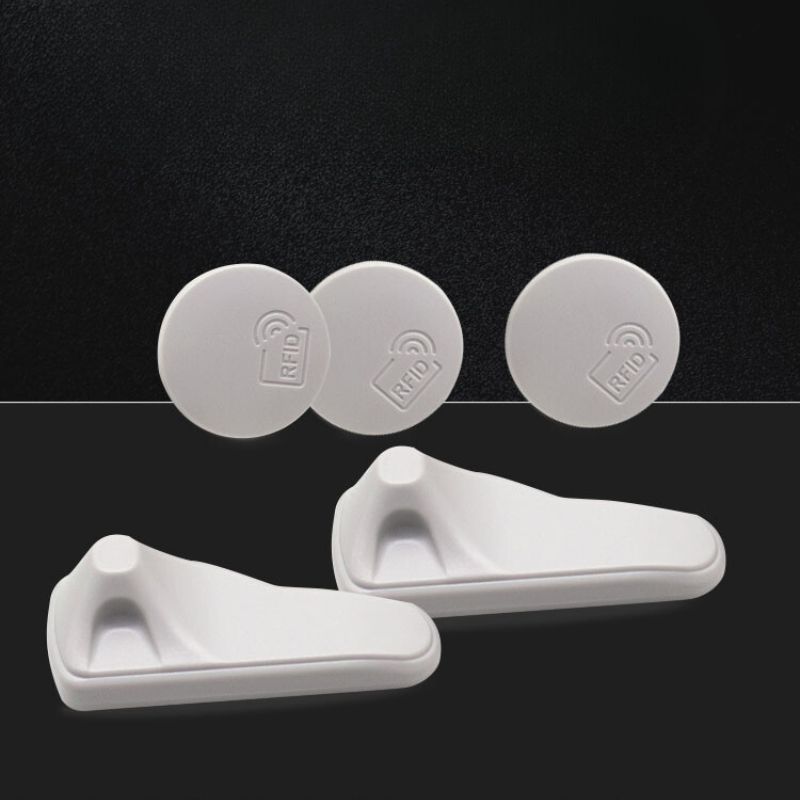
How to Remove Electronic Tags from Clothes?
Table of Contents
How to Remove a Security Tag Safely and Effectively
This guide will teach you how to safely remove electronic tags from clothing without causing damage or triggering alarms. Stick with us to discover practical solutions and essential tips.
1. What Are Security Electronic Tags and Why Are They Used?

Security Electronic tags are small devices attached to retail items to deter theft. They contain mechanisms such as ink vials, alarms, or magnetic locks, which activate if unauthorized removal is attempted or if someone exits a store without properly deactivating the system.
These electronic tags are commonly seen on:
- Clothing
- Electronics
- Accessories
Their purpose? Protecting store inventory while providing customers with a smooth shopping experience.
This innovative technology leverages three main components:
- Tags that store data.
- Readers that transmit and receive signals.
- Antennas that facilitate communication between the two.
2. Different Types of Security Tags
Understanding the type of electronic tags is essential for safe removal. Here are the most common types:
| Type | Features | Common Use |
|---|---|---|
| Magnetic Tags | Requires strong magnets for removal | Clothing, electronics |
| Ink Tags | Contains ink that spills if tampered with | Apparel |
| Electronic Tags (EAS) | Triggers an alarm when leaving the store | Retail, libraries |
Each tag serves a specific purpose, so using the correct method is vital to avoid damage.
3. Why Do Stores Forget to Remove Security Tags?
It’s surprisingly common for stores to leave a tag on an item due to: accidentally
- Human error during checkout.
- Busy retail environments.
- Malfunctioning deactivation systems.
If you notice a security tag after purchase, keep the receipt as proof.
4. How to Remove Electronic Tags Safely at Home
If going back to the store isn’t feasible, there are safe ways to remove tags yourself. Common techniques include:
- Using magnets.
- Employing household tools like rubber bands and pliers.
- Freezing the garment to weaken adhesive or plastic components.
5. Common Tools for Security Tag Removal
Here’s a list of tools you can use:
| Tool | Use |
|---|---|
| Rare earth magnet | For magnetic tags. |
| Rubber bands | To apply tension around the pin. |
| Screwdriver or plier | For prying open certain types of tags. |
When using these tools, handle the garment carefully to avoid damage.
6. Using a Magnet to Remove a Security Tag
A powerful magnet (like a rare-earth magnet) can deactivate magnetic tags. Here’s how:
- Place the magnet on the dome side of the electronic tags.
- Wiggle the tag to find the locking mechanism.
- Once unlocked, slide the halves apart.
This method is effective for most magnetic security tags but doesn’t work for ink tags.
7. The Freeze Method: Does It Work?
Freezing is a popular hack for ink tags. Here’s how it works:
- Place the garment in a freezer for 2-3 hours.
- This hardens the ink, reducing the chance of spills.
- Use a screwdriver or plier to gently remove the pin.
While this technique is useful, proceed with caution to avoid stains or damage.
8. Why Ink Tags Require Extra Caution
Ink tags are designed to deter theft by spilling ink when forcibly removed. To handle them safely:
- Avoid brute force methods.
- Place a rubber band around the pin to create tension.
- Use precise tools like pliers to remove the tag without spilling ink inside.
9. What to Do If You Can’t Remove the Security Tag
If your attempts fail, here’s what you can do:
- Return to the store with the item and receipt.
- Explain the situation to a cashier or manager.
- Request removal or exchange for a tag-free item.
Many stores prioritize customer service, so don’t hesitate to ask.
10. Preventing Security Tag Mishaps
Avoid the hassle of removing electronic tags by taking these precautions:
- Check your items before leaving the store.
- Request assistance if a tag is still attached.
- Keep receipts for proof of purchase.

FAQs
How do I remove security electronic tags at home without damaging the garment?
Use a magnet, freezing, or the rubber band method. Avoid excessive force to prevent damage.
What should I do if the electronic tags contain ink?
Proceed with caution. Freeze the garment first or use a rubber band to loosen the locking mechanism safely.
Can I remove a security tag without tools?
While it’s challenging, you may use household items like rubber bands or a flat surface to create leverage.
Is it legal to remove a security tag at home?
If you’ve purchased the item and have a receipt, it’s generally acceptable. For clarity, contact the store.
What’s the easiest way to remove a magnetic tag?
Use a strong magnet like a neodymium magnet. Place it on the base of the tag and wiggle until it pops open.
Key Takeaways
- Security tags are essential for theft prevention, but can be a hassle if forgotten.
- Use safe methods, such as magnets, freezing, or rubber bands, for removal.
- Handle ink tags with care to avoid spills.
- Keep your receipt as proof of purchase.
For more on RFID solutions and security tags, visit RFID Tags and Security Tag Solutions.
By following these steps, you can resolve security tag issues smoothly and protect your garments from damage.
Comments
Hot Products

What Is RFID Waste Management
Imagine a city where every trash bin speaks — not literally — but through a tiny chip that tells the system when it’s full, when it’s emptied, and where it went. That’s what RFID waste management is doing today.

What are Bolt Seals and their Applications? | Complete Guide
In global trade and logistics, bolt seals play a crucial role in ensuring cargo security and compliance. These small but powerful devices are designed to lock shipping containers, trailers, and cargo doors with a tamper-evident mechanism.

What is an RFID Card Protector? Benefits, Use Cases, and Buying Guide
RFID technology (Radio Frequency Identification) is everywhere: in your credit cards, ID badges, transit passes, hotel room keys, and more. It offers speed and convenience, but it also opens the door to a new kind of digital theft called “skimming.” That’s where an RFID card protector comes in.

RFID Wristbands for Events: Bulk Buying Guide for Organizers
RFID wristbands for events are becoming the go-to solution for organizers who need faster entry, fraud prevention, and cashless payments at concerts, festivals, and sports venues. Unlike paper tickets or QR codes, these smart wristbands use embedded chips to streamline access, secure transactions, and improve the guest experience.

How RFID Tag on Windscreen Improves Vehicle Access Control and Toll Systems
In today’s fast-paced world, vehicle identification needs to be quick, secure, and contactless. An RFID Tag on the Windscreen provides exactly that — a reliable way to manage toll collection, parking, and gated access without stopping vehicles.

The Benefits of RFID Linen Tags in Commercial Laundry
Managing laundry in hospitals, hotels, or large laundry services is a big job. Each day, thousands of sheets, towels, and uniforms are washed, sorted, and sent back out. But problems like lost linens, sorting mistakes, and manual counting can cost companies a lot of money. For example, mid-sized hotels can lose over $200,000 each year from missing linens.
That’s where RFID Linen Tags come in.
Tags
RELATED BLOGS

What Is RFID Waste Management
Imagine a city where every trash bin speaks — not literally — but through a tiny chip that tells the system when it’s full, when it’s emptied, and where it went. That’s what RFID waste management is doing today.

What are Bolt Seals and their Applications? | Complete Guide
In global trade and logistics, bolt seals play a crucial role in ensuring cargo security and compliance. These small but powerful devices are designed to lock shipping containers, trailers, and cargo doors with a tamper-evident mechanism.

What is an RFID Card Protector? Benefits, Use Cases, and Buying Guide
RFID technology (Radio Frequency Identification) is everywhere: in your credit cards, ID badges, transit passes, hotel room keys, and more. It offers speed and convenience, but it also opens the door to a new kind of digital theft called “skimming.” That’s where an RFID card protector comes in.




